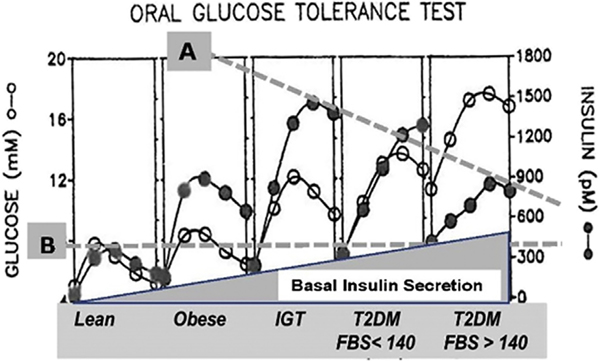Fig. 2.
Plasma glucose and insulin during oral glucose tolerance tests [27]. Fasting blood insulin levels increase with progression of type 2 diabetes (T2D), but maximum secretion of insulin falls with advancement of the disease in response to a meal (A). However, even in advanced T2D, the response is almost double that of a normal individual (B). The most striking effect, however, of the progression of the disease is the continued increase in fasting basal insulin secretion, a finding that indicates that in advanced T2D, even when these individuals are sleeping and fasting, they secrete insulin at levels that exceed the normal response after meals.

